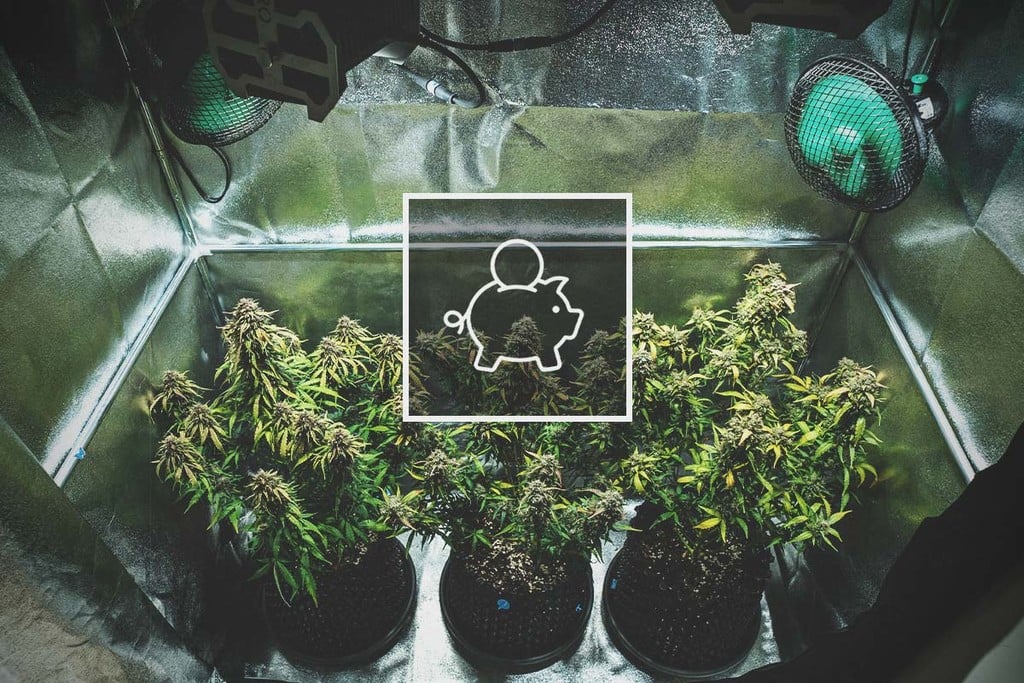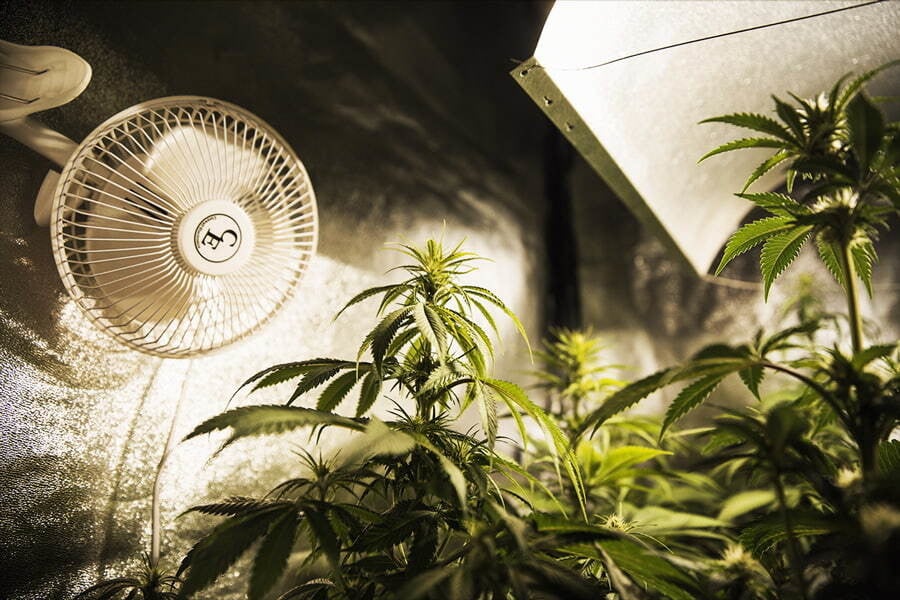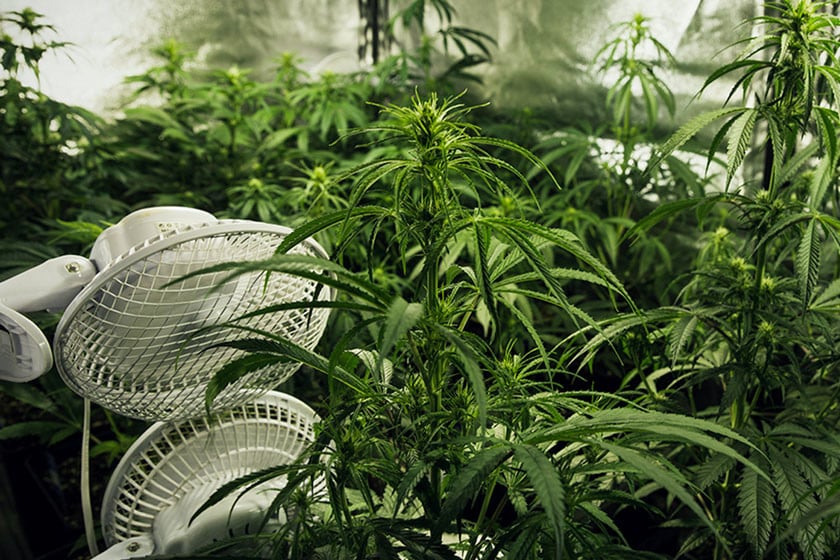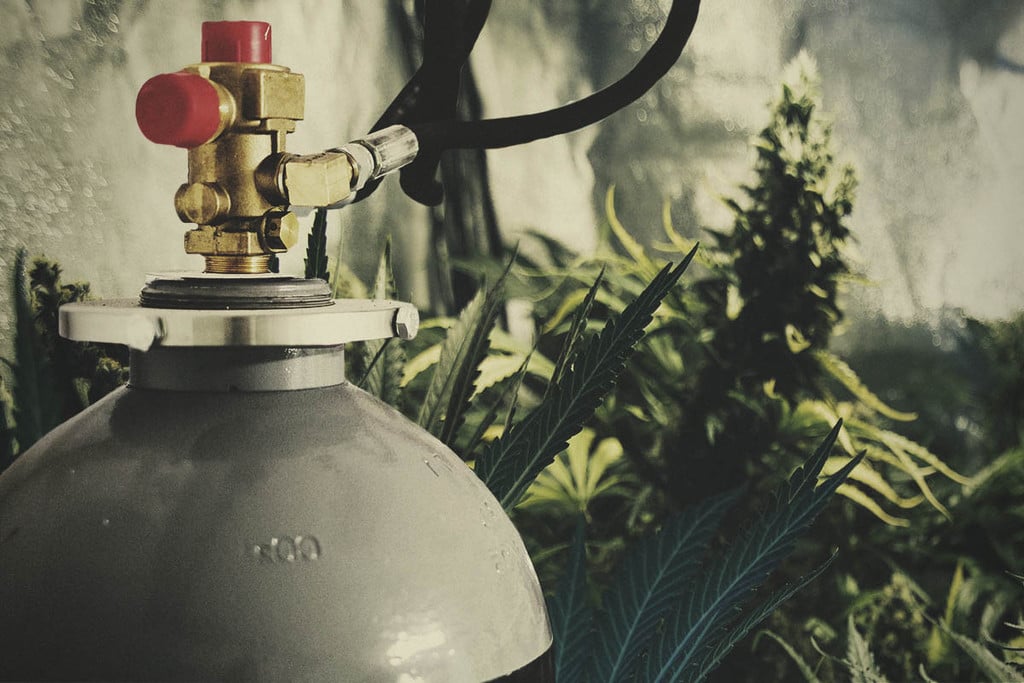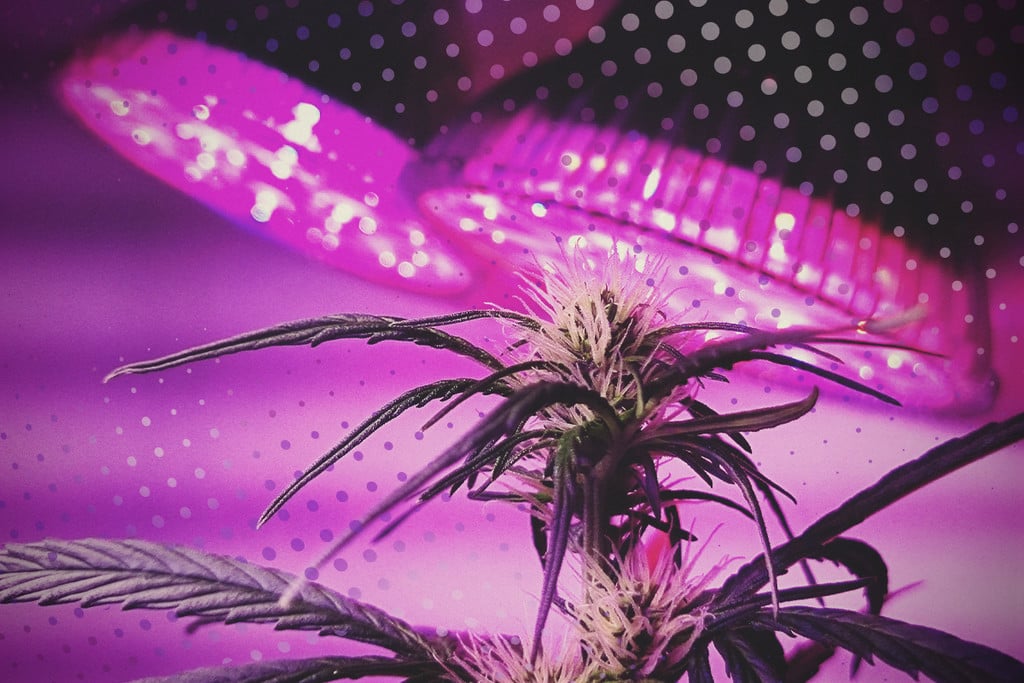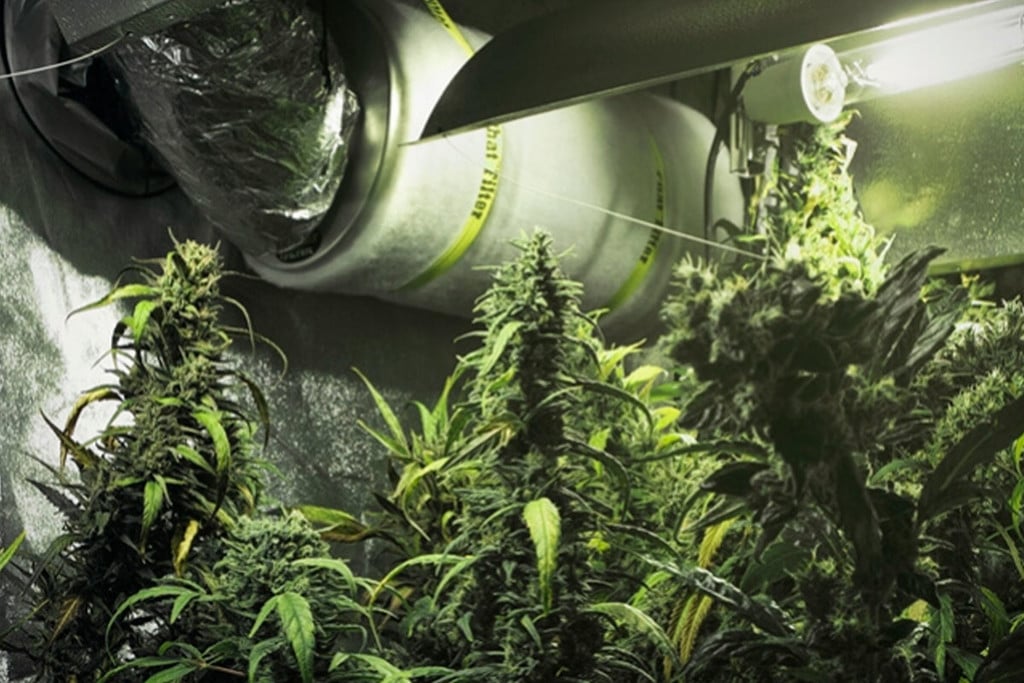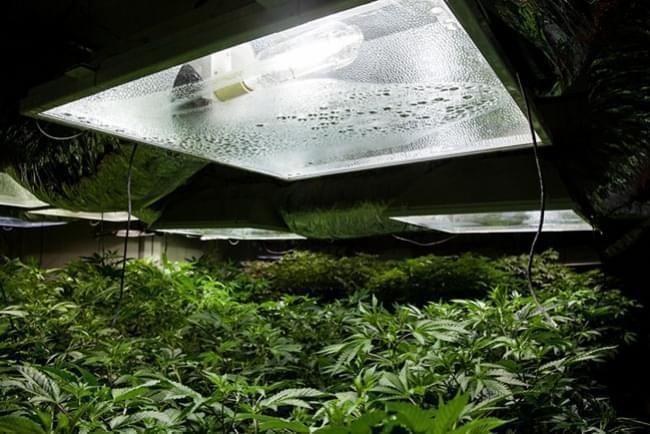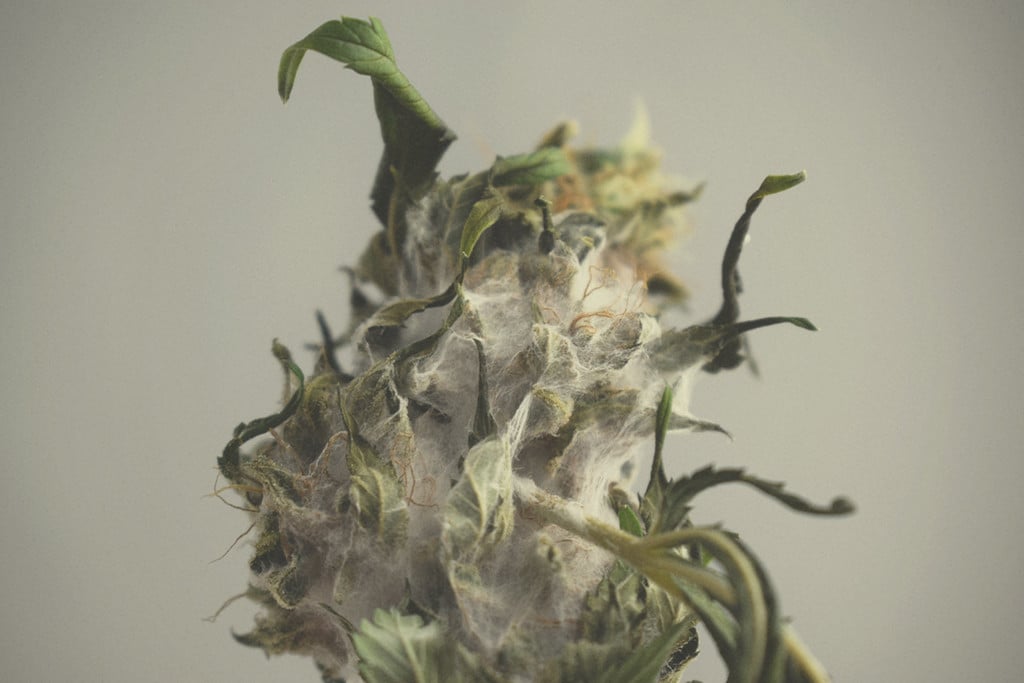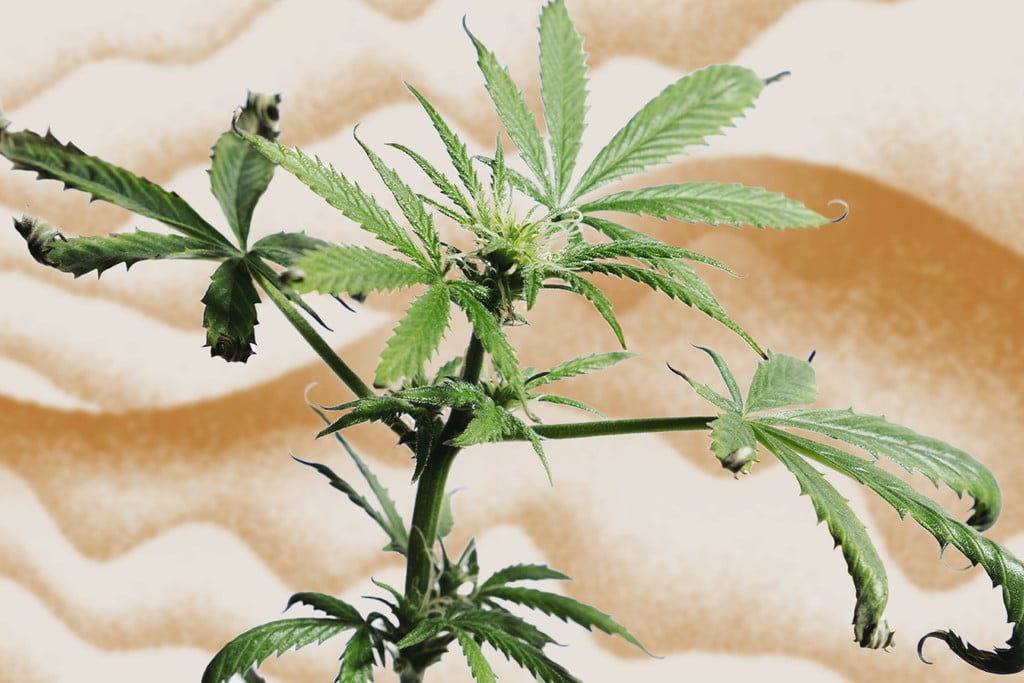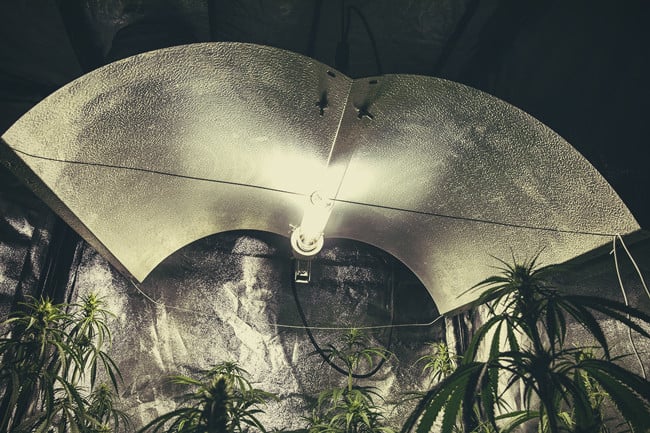.
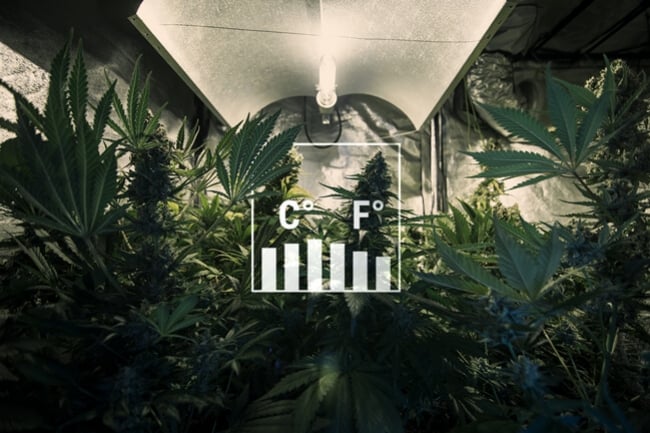
How to Keep Your Grow Tent Cool in Summer
Planning an indoor grow this summer? Keep reading to learn how to keep your grow room or tent cool over the summer months, so you can grow healthy plants and reap a bountiful harvest.
Like all things, growing cannabis in a tent has its advantages and challenges. One of the biggest challenges is managing the temperature, especially during the summer. In warm conditions, grow tents can quickly become hot and stuffy, which can affect the health of your plants. In this article, we'll teach you how to keep your grow tent cool during the summer months to ensure you harvest the best weed possible.
Contents:
Why Grow Room Temperature Management Is So Important
When we grow cannabis indoors, we need to take the reins and closely monitor the conditions in our tent/room to ensure our plants can achieve their full potential. Temperature, in particular, is very important to the health of cannabis plants; when temperatures autumn outside of the ideal range for cannabis (outlined below), many of the plant's biological processes slow down, affecting its ability to grow.
Moreover, high temperatures, in particular, can create a breeding ground for pests, which, if not controlled, can severely impact the health of your plants. When temperatures rise, humidity often does too (because hot air can hold more moisture than cold air), which can also promote the growth of fungi and other pathogens that can ruin an entire harvest very quickly.
What Is the Best Temperature and Humidity for Indoor Cannabis?
Cannabis grows best when provided with ideal temperatures and humidity levels for each phase of its life cycle. When growing weed indoors, keep the temperatures and humidity levels in your tent/room within the following ranges to maximise the health of your plants.
Seedlings
- Seedlings and clones respond best to humidity levels of 65–75% RH, as their root systems are not yet well-established. Clones and young plants take in moisture through their leaves.
- Room temperature with lights on should be 20–25°C. Lights off: 15–20°C.
Vegetation
- During vegetation, lower the humidity by 5% per week. Between 40–70% RH is acceptable. Roots are now established and the plants are beginning to transpire.
- Room temperature with lights on should be 22–28°C. Lights off:18–22°C.
Flowering
- During flowering, low humidity is important. Decrease to 40–50% RH. Over 60% can mean slowed growth and increased pathogen risk.
- Room temperature with lights on should be 20–26°C. Lights off: 16–22°C. The goal is to imitate autumn, so temps need to be kept low.
Late Flowering
- During late flowering, improvements to overall quality can be achieved by keeping temperature and humidity as low as possible. Humidity under 40% RH is ideal.
- Room temperature with lights on should be 18–24°C. Increase the difference between day/night temps by up to 10°C for best results.
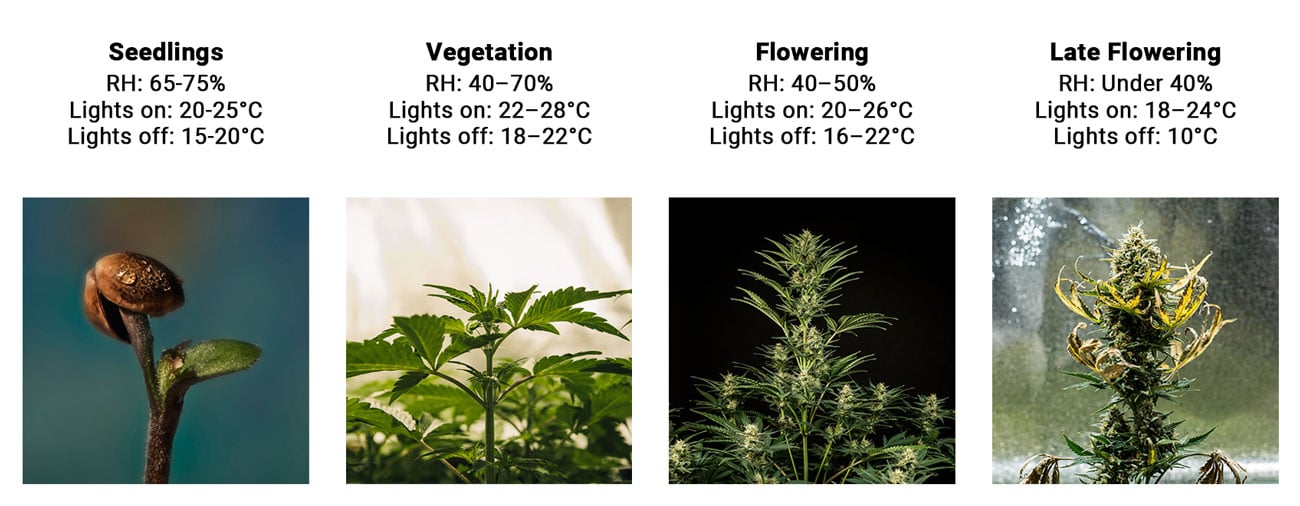
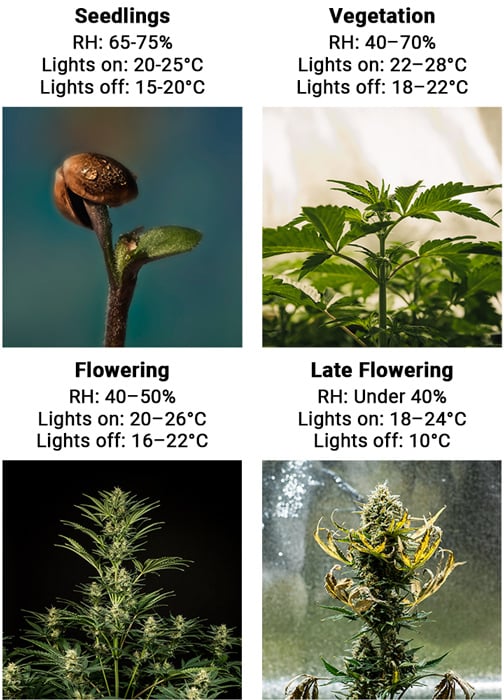
Cooling a Grow Tent: Effective Strategies to Lower Temperature
How you choose to go about cooling your grow room/tent will vary depending on the particular weather conditions in your local region and your home. Choosing the right tent setup is crucial. A well-designed growing tent kit can help regulate temperature and improve airflow, making it easier to maintain ideal conditions. If you live in a more temperate region, you may need to do very little to manage the heat in your grow room. The same goes if you keep your tent indoors in an already cool space.
If, on the other hand, you live in a region with hot summers and/or the space where you've set up your tent is prone to summer heat, you'll probably need to take more drastic measures to ensure the temperatures in your space stay optimal. Some of these measures may drive up the running costs of your tent, which may, in turn, affect your decision to grow indoors over the summer.
Below, we'll walk you through a range of passive and active measures to help you manage grow room heat.
Passive Solutions to Manage Grow Tent Heat in the Summer
- By nature, electronics generate heat. Besides your grow light, we recommend keeping as many electronics (such as ballasts, motors, pumps, and timers) outside of your grow tent. Not only will this minimise the amount of heat in your tent/room, but you'll likely also find that keeping your electronics in one place is very convenient, allowing you to observe all of the electronic aspects of your grow-op at a glance.
- Set up your tent in a room/area of your house that receives little or no direct sunlight. If you have no choice but to keep your plants in a room with lots of direct sunlight, use blackout shades to keep out as much light as possible.
- Source the air for your intake fans from a cool place, and keep your exhaust outlets outside of the room you're growing in. Ideally, try to vent the air from your exhausts outdoors or at least into another room (not the room that your tent is in). The heat from a 400W HPS or MH light will heat any standard-size room very quickly.
- Grow at night. Make your day cycle during the night. Expect a 10–15°C difference in ambient air temperature at night.
- Use rolls of flexible insulation to cover your grow tent and insulate it from the conditions in the rest of your home. If you're building a dedicated grow room, investing in insulation is a must.
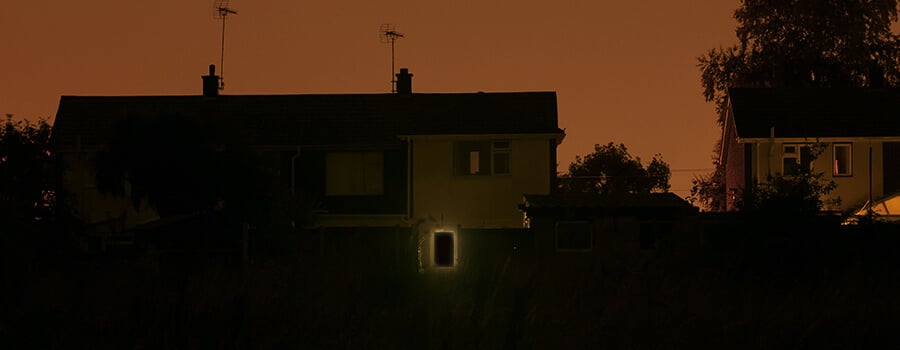
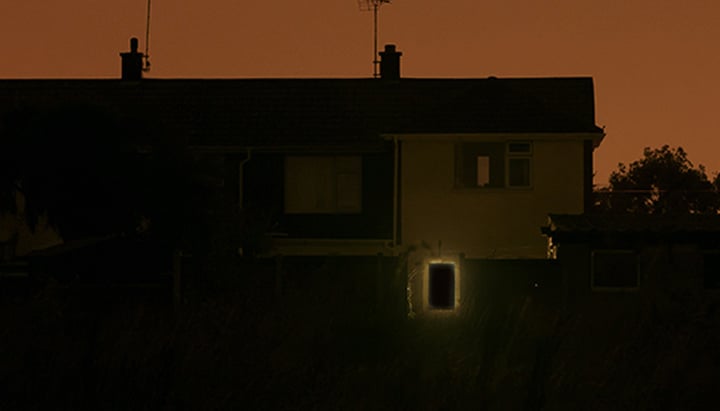
Active Solutions to Manage Summer Heat in Your Grow Tent
- First and foremost, use a thermometer and hygrometer to closely monitor the temperature and relative humidity in your grow space.
- Use cooled grow light reflectors. Not only will they help to direct light back onto your plants, maximising their growth, but they'll also help to mitigate some of the heat produced by your lights. Grow light reflectors are fairly inexpensive and a solid option for any grow room.
- Consider installing a dimmable ballast. Periodically dimming the wattage of your grow lights can reduce the heat emitted without interrupting the growing cycle.
- Invest in fans and keep air circulation high. Still air is the enemy of cannabis and greatly contributes to the heat inside your grow room/tent. Always keep oscillating fans working both above and below your canopy, especially when growing multiple plants at a time. Position your fans to create a cross-breeze in your tent, ideally in a way that directs air from your intake ducts to the exhaust. Consider investing in larger fans if need be. It is more efficient to run larger fans on lower settings than to max-out smaller fans.
- Use air conditioners and dehumidifiers to cool your grow space.
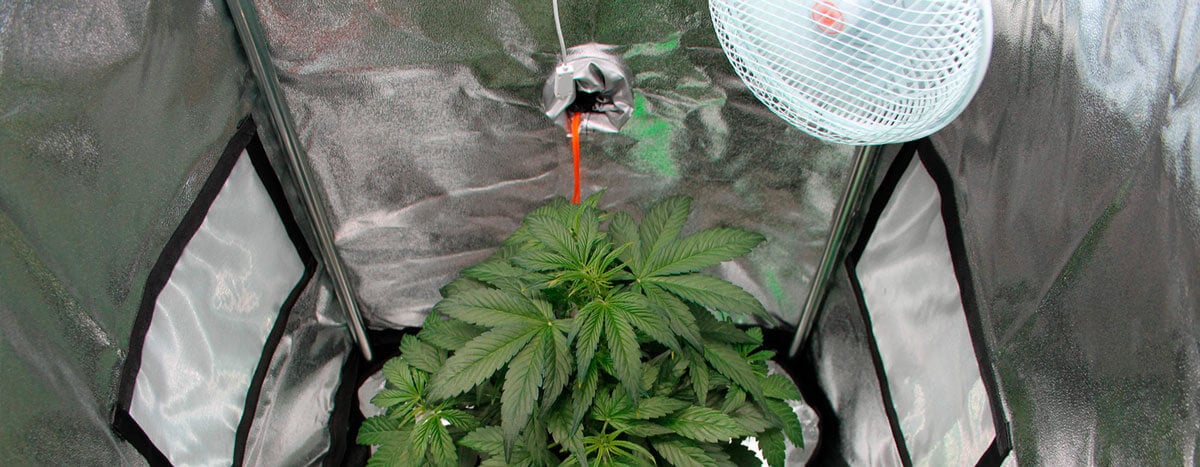
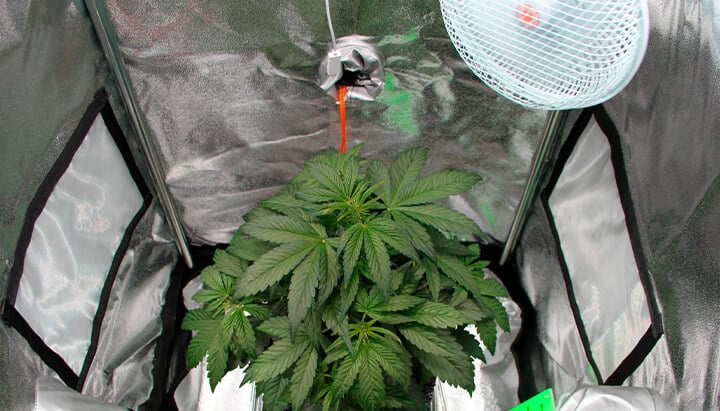
Mitigating the Costs of Managing Grow Tent Temperature and Staying Sustainable
Keeping a grow tent or room cool in summer obviously comes at a cost. Grow lights already consume a considerable amount of energy, and running additional oscillating fans, intake and outtake systems, and/or air conditioners/dehumidifiers can dramatically increase the overall cost of your grow operation.
How much this affects you will depend on your budget. If you're very budget-conscious, you may want to consider operating your grow tent from autumn through spring when temperatures are cooler and you don't have to worry so much about cooling. If you're not worried about the added costs of cooling your tent or room, we still think you should consider ways to minimise the energy footprint of your grow-op, by looking into things like:
- The passive solutions listed above. Before going out and spending extra money to buy and run more grow equipment, see if there are easier and less energy-intensive options available.
- Sustainable growing practices. While you might not be able to get around installing fans to cool your tent, there may be other things you can do to offset the environmental footprint of your grow-op.
- Going organic. Organic cannabis cultivation not only produces superior bud, but it's a lot more cost and energy-efficient than you might think. Just like improving the energy efficiency of your grow tent/room can help offset the costs of your operation, so can implementing organic grow techniques.
What Temperature Is Too Hot for Cannabis?
Mature cannabis plants typically like daytime temperatures of 20–30°C (70–85°F) and night-time temperatures of roughly 10°C cooler. While most cannabis varieties can handle slightly higher temperatures, prolonged exposure to temperatures above 35°C/95°F will impact the growth of your plants, just like cool temperatures will.
How to Spot Heat Stress in Cannabis Plants
Be sure to protect your cannabis plants from heat stress throughout their life cycle. Over time, heat stress will manifest in the form of visible signs of unhealthy growth. As outlined below, the signs of heat stress can vary slightly depending on your plants’ stage of growth.
Heat Stress Symptoms in Cannabis Seedlings
Seedlings are very vulnerable and will usually die if exposed to heat stress for prolonged periods. Here are the main symptoms of heat stress in seedlings:
- Stunted growth
- New leaves look pale and wither quickly
- Wilting
Heat Stress Symptoms in Vegetative Cannabis Plants
- Curled and cupped leaves
- Dry, withering leaf edges
- Brown spots on fan and sugar leaves, especially near the top of the plant (if left unaddressed, lower leaves may also turn brown and wither)
Heat Stress Symptoms in Flowering Cannabis Plants
- Bleached-looking, yellowing leaves
- Curled leaves
- Foxtailing
- An unusual amount of white stigmas at harvest time
- Light, airy flowers with little resin and smell
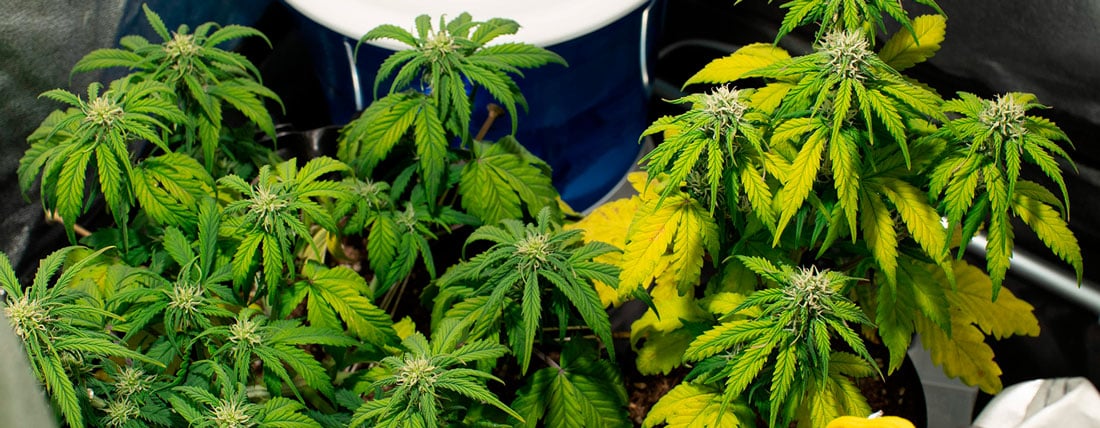
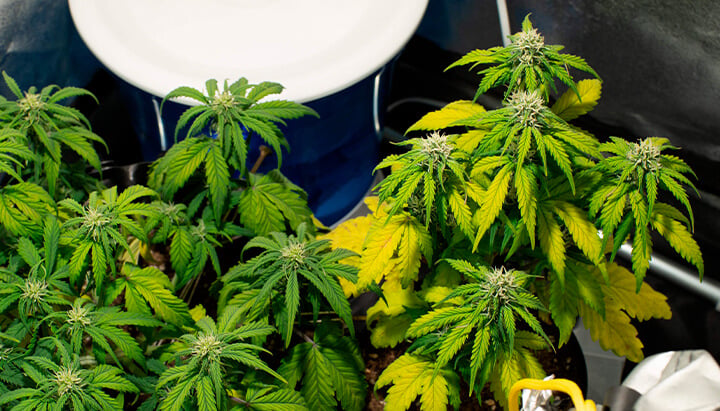
Summer Lovin'
Summer is naturally cannabis' season to thrive. Unfortunately, growing in the confines of a tent or room can be challenging during the summer months, especially if you live in a hot region. Luckily, by using a combination of the passive and active approaches to managing grow tent heat discussed here, your summertime indoor grow should go smoothly. Happy growing!


























